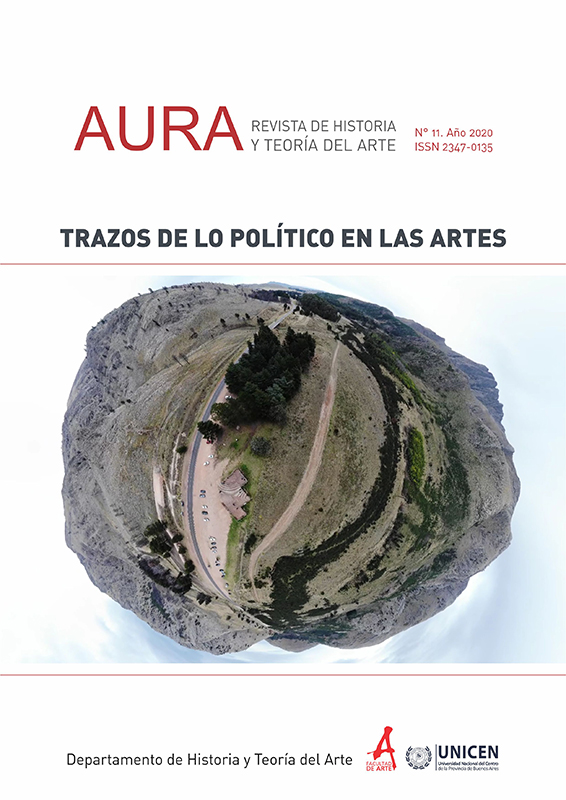First theorem on Invasion by Hugo Santiago
Keywords:
autonomy, transgression, narrative resources, semiotic resourcesAbstract
Much has been written about the film Invasión (1969) by Hugo Santiago Muchnik, the one that would have a script written by Jorge Luis Borges himself and by Adolfo Bioy Casares. In the panorama of national cinema, the film is impossible to ascribe to any cinematographic current and to any particular genre. Trying to take something from what various researchers have written about the film and some of Santiago's own testimonies, we will argue that the audiovisual resources in Invasión are transgressed by being approached in unconventional ways; achieving an autonomy of the film in multiple factors such as: generic conventions, narrative structure, archetypal characters and cinematographic space. In Santiago's film there is a shift between the representation and the one represented thanks to the multiple transgressions generated throughout the film's structure. The filmmaker would always seek the creation of his own cinematographic language in constant transgression, linking and transformation that end in a kind of autonomy statute.
References
Langlois, Gerard (1971) “Le fantastique, une manière de percer le réel” en Les Lettres françaises.
Oubiña, David (2002), “En los Confines del Planeta”, en “El Cine de Hugo Santiago” ed. Nuevos Tiempos.
Oubiña, David (2002), prólogo de “El Cine de Hugo Santiago” ed. Nuevos Tiempos.
Cozarinsky, Edgardo (1981), “Borges en / y / sobre cine, Madrid, ed. Fundamentos.
Pérez Llahí, Marcos Adrián (2011), “Tema del Sitiador y del Sitiado” en “Una Historia del Cine Político y Social en Argentina (1969-2009)” de Ana Laura Lusnich y Pablo Piedras, ed. Nueva Librería.
Cerdá, Marcelo (2011) “La política de las formas neutras. Sobre Invasión de Hugo Santiago” en “Una Historia del Cine Político y Social en Argentina (1969-2009)” de Ana Laura Lusnich y Pablo Piedras, ed. Nueva Librería.
Simsolo, Noël (2009), “El Cine Negro. Pesadillas Verdaderas y Falsas”, ed. Alianza Editorial.
Borde, Raymond y Chaumeton, Etienne (1958) “Panorama del Cine Negro” ed. Ediciones Losange.
Conard, Mark (2007) “La Filosofía del Neo-Noir”, ed. The University Press of Kentucky.
Wager, Jans (2005) prólogo de “Dames in Driver’s Seat”, ed University of Texas Press.
Abrams, Jerold J. (2007),“Espacio, Tiempo y Subjetividad en el Cine Neo-Noir” en “ La Filosofía del Neo-Noir” de Mark Conard, ed. The University Press of Kentucky.
Moguillansky, Alejo (2008) documental “Aquilea: Nueve pequeños films sobre Invasión”.
Moguillansky, Alejo (2008) documental “Borges/Santiago: Variaciones sobre un guión”.


